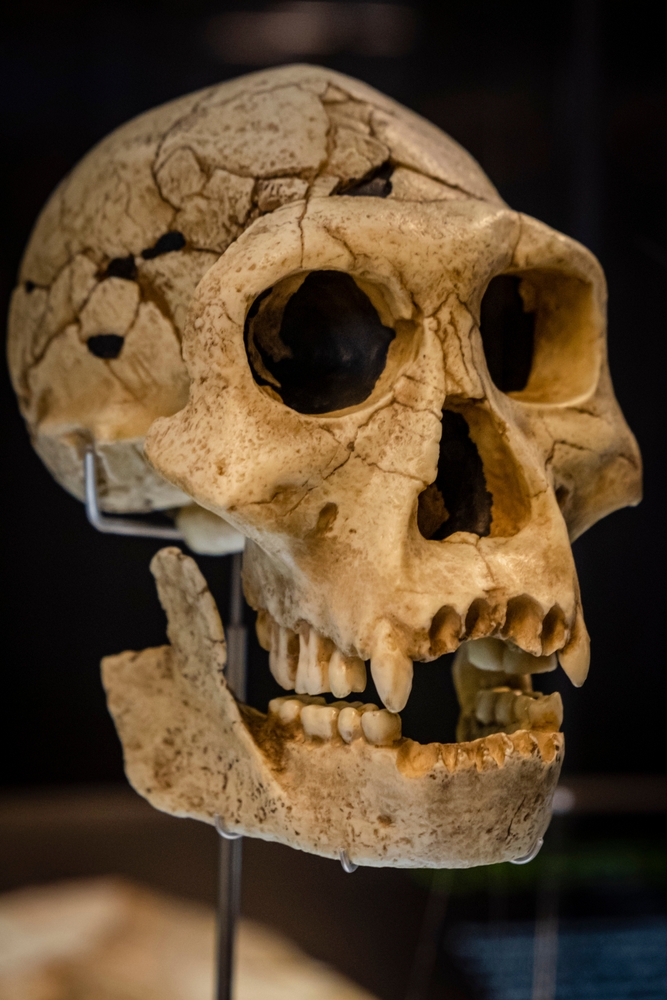As the only surviving members of the Hominini tribe, us Homo sapiens have the important responsibility of piecing together our family tree, documenting all those extinct human species upon whose hairy shoulders we stand. Yet the more fossils we discover, the messier the picture seems to get, and the harder it becomes to figure out exactly who we are and where we come from.
The current cast of characters that make up our backstory includes a number of surprising and highly controversial human-like creatures, yet which of these actually deserve to be classified as a unique species is something anthropologists can’t seem to agree on.
Ardipithecus ramidus
What we do know is that our story begins in Africa with a bunch of ape-like beings known as the basal hominins. The earliest of these was Sahelanthropus tchadensis, which appeared when our lineage diverged from that of chimpanzees some 7 million years ago.
Next came Orrorin tugenensis, yet it wasn’t until 2009 that scientists confirmed the existence of a third basal hominin called Ardipithecus ramidus. The species lived in Ethiopia around 4.5 million years ago and may have been among the first of our ancestors to walk on two feet. Despite its relatively recent discovery, this ape-ish species is now represented by more than 100 fossils in East Africa.
Homo gautengensis
After the basal hominins came a series of other primitive species belonging to the genera Australopithecus and Paranthropus, before the first member of the Homo genus finally burst onto the scene around 2 million years ago. However, in 2010, an anthropologist named Darren Curnoe rocked the boat by suggesting that a partial skull found in South Africa in 1977 actually represented the very first Homo species.
Dubbing this primordial human Homo gautengensis, Curnoe argues that its morphology is sufficiently different from all other archaic hominins to be classified as a separate species. However, most scholars are unconvinced, and think that Homo gautengensis is probably just an early variant of Homo erectus.
Homo Georgicus
Another highly contentious entry in our family tree, Homo Georgicus is the name given to a 1.85-million-year-old specimen from Dmanisi, Georgia, which holds the distinction of being the oldest known human fossil outside of Africa. Since its discovery in 1991, H. Georgicus has been at the center of a raging debate, with some experts arguing that it’s just another form of H. erectus while others insist that it’s a separate species.
Intriguingly, a recent genetic study suggested that the Dmanisi assemblage may actually include two distinct human species, neither of which is related to H. erectus. The authors of this as yet unpublished paper conclude that one of these is indeed H. Georgicus, while the other represents an “unnamed species”.

Five skulls belonging to H. georgicus have been discovered in Dmanisi, but are they really all from the same species?
Image credit: tolobalaguer.com/Shutterstock.com
Homo helmei
Described from a single South African cranium known as the Florisbad skull, the contested species Homo helmei is thought to have lived some 350,000 years ago, just as our own species began to spread across Africa.
Originally classified in 1935, H. helmei has since been re-visited by numerous anthropologists, most of whom now believe that the Florisbad skull actually belonged to a very early Homo sapiens individual. However, despite being the same species as us, the morphology of this prehistoric fossil is pretty different from modern human skulls, probably because this particular specimen lived many millennia before our ancestors mated with Neanderthals and Denisovans.
Homo longi, Homo juluensis… or the Denisovans?
All of which brings us onto our sister lineage, the Denisovans. So far, we’ve only discovered a few bones belonging to this enigmatic species at sites in Siberia, Tibet, and Taiwan. However, a number of other specimens from across Asia are theorized to belong to the Denisovan line of descent.
For instance, Homo longi – meaning ‘Dragon Man’ – is the classification given to a chunky human fossil from northern China. With enormous teeth and a series of strange facial features, this 150,000-year-old individual is considered by many experts to be a Denisovan, although we won’t be able to confirm this until we find more fossils from this mysterious hominin.
Meanwhile, in late 2024, researchers announced yet another species from the same region. Known as Homo juluensis, this new addition to the human family is also speculated to be a Denisovan, all of which highlights just how little we really know about the ancient hominins that came before us.
Source Link: The Lost Hominins You’ve Never Heard Of